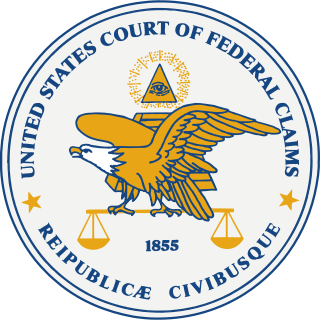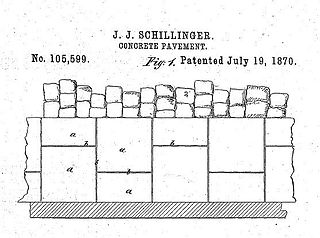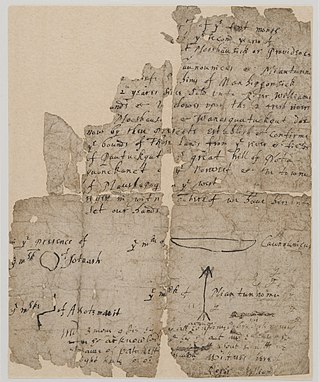In employment law, constructive dismissal, also called constructive discharge or constructive termination, occurs when an employee resigns as a result of the employer creating a hostile work environment. Since the resignation was not truly voluntary, it is, in effect, a termination. For example, when an employer places extraordinary and unreasonable work demands on an employee to obtain their resignation, this can constitute a constructive dismissal.

Quantum meruit is a Latin phrase meaning "what one has earned". In the context of contract law, it means something along the lines of "reasonable value of services".

A fiduciary is a person who holds a legal or ethical relationship of trust with one or more other parties. Typically, a fiduciary prudently takes care of money or other assets for another person. One party, for example, a corporate trust company or the trust department of a bank, acts in a fiduciary capacity to another party, who, for example, has entrusted funds to the fiduciary for safekeeping or investment. Likewise, financial advisers, financial planners, and asset managers, including managers of pension plans, endowments, and other tax-exempt assets, are considered fiduciaries under applicable statutes and laws. In a fiduciary relationship, one person, in a position of vulnerability, justifiably vests confidence, good faith, reliance, and trust in another whose aid, advice, or protection is sought in some matter. In such a relation, good conscience requires the fiduciary to act at all times for the sole benefit and interest of the one who trusts.
A fiduciary is someone who has undertaken to act for and on behalf of another in a particular matter in circumstances which give rise to a relationship of trust and confidence.
A legal remedy, also referred to as judicial relief or a judicial remedy, is the means with which a court of law, usually in the exercise of civil law jurisdiction, enforces a right, imposes a penalty, or makes another court order to impose its will in order to compensate for the harm of a wrongful act inflicted upon an individual.

The United States Court of Federal Claims is a United States federal court that hears monetary claims against the U.S. government. It was established by statute in 1982 as the United States Claims Court, and took its current name in 1992. The court is the successor to trial division of the United States Court of Claims, which was established in 1855.
Consequential damages, otherwise known as special damages, are damages that can be proven to have occurred because of the failure of one party to meet a contractual obligation, a breach of contract. From a legal standpoint, an enforceable contract is present when it is: expressed by a valid offer and acceptance, has adequate consideration, mutual assent, capacity, and legality. Consequential damages go beyond the contract itself and into the actions that arise from the failure to fulfill. The type of claim giving rise to the damages, such as whether it is a breach of contract action or tort claim, can affect the rules or calculations associated with a given type of damages. For example, consequential damages are a potential type of expectation damages that arise in contract law.
A cause of action or right of action, in law, is a set of facts sufficient to justify suing to obtain money or property, or to justify the enforcement of a legal right against another party. The term also refers to the legal theory upon which a plaintiff brings suit. The legal document which carries a claim is often called a 'statement of claim' in English law, or a 'complaint' in U.S. federal practice and in many U.S. states. It can be any communication notifying the party to whom it is addressed of an alleged fault which resulted in damages, often expressed in amount of money the receiving party should pay/reimburse.

The Tucker Act is a federal statute of the United States by which the United States government has waived its sovereign immunity with respect to certain lawsuits.
In the United States, the processes of government procurement enable federal, state and local government bodies in the country to acquire goods, services, and interests in real property.

Schillinger v. United States, 155 U.S. 163 (1894), is a decision of the United States Supreme Court, holding that a suit for patent infringement cannot be entertained against the United States, because patent infringement is a tort and the United States has not waived sovereign immunity for intentional torts.
United States v. Utah Construction & Mining Company, 384 U.S. 394 (1966), is a United States Supreme Court case in which the Court held that "(w)hen an administrative agency is acting in a judicial capacity and resolves disputed issues of fact properly before it which the parties have had an adequate opportunity to litigate, the courts have not hesitated to apply res judicata to enforce repose." Utah Construction established a two-part test to determine whether res judicata effect should be given to an administrative determination. First, the agency proceeding must be examined to determine whether the agency was "acting in a judicial capacity" and whether the parties had "an adequate opportunity to litigate" the issues before the agency. Second, the general rules of res judicata must be applied to the case. Not all administrative adjudications, and not all judicial determinations, are entitled to res judicata effect. For the principles of res judicata to apply, administrative determinations, like court judgments, must be valid, final and on the merits.
An equitable adjustment, in government contracting, is a contract adjustment pursuant to a changes clause, to compensate the contractor expense incurred due to actions of the Government or to compensate the Government for contract reductions. An equitable adjustment includes an allowance for profit; clauses that provide for adjustments, excluding profit, are not considered "equitable adjustments."
KECO Industries, Inc. v. United States, 176 Ct. Cl. 983, 998, was a case before the United States Court of Claims dealing with the procedure for handling contract adjustments when a contractor provides a substitution.
A changes clause, in government contracting, is a required clause in United States government construction contracts.

G.L. Christian and Associates v. United States is a 1963 United States Federal Acquisition Regulation (FAR) court case which has become known as the Christian Doctrine. The case held that standard clauses established by regulations may be considered as being in every Federal contract. Because the FAR is the law, and government contractors are presumed to be familiar with the FAR, a mandatory clause that expresses a significant or deeply ingrained strand of public procurement policy will be incorporated into a Government contract by operation of law, even if the parties intentionally omitted it.
The superior knowledge doctrine is a principle in United States contract law which states that the government must disclose to a contractor any otherwise unavailable information that is vital to contract performance. It is also referred to as "the Helene Curtis doctrine of superior knowledge.

The United States was the first jurisdiction to acknowledge the common law doctrine of aboriginal title. Native American tribes and nations establish aboriginal title by actual, continuous, and exclusive use and occupancy for a "long time." Individuals may also establish aboriginal title, if their ancestors held title as individuals. Unlike other jurisdictions, the content of aboriginal title is not limited to historical or traditional land uses. Aboriginal title may not be alienated, except to the federal government or with the approval of Congress. Aboriginal title is distinct from the lands Native Americans own in fee simple and occupy under federal trust.

The Grand Street Bridge was a double-leaf deck-girder bascule bridge in Bridgeport, Connecticut, United States, that spanned the Pequonnock River and connected Grand Street and Artic Street. It was one of three movable bridges planned by the City of Bridgeport in 1916 at the request of the War Department during World War I. Construction was completed in 1919, but the delays surrounding the construction went to the Connecticut Supreme Court in case of Edward DeV. Tompkins, Inc. vs. City of Bridgeport, Connecticut. The court ruled in favor of Tompkins and awarded damages equal to the contract. In 1936, the bridge had excessive settling and required the replacement of its southeast pier. As part of the repairs, a new floor and electrical system were installed. In 1965, the floor was replaced with a steel grate on I-beam floor. In 1984, the eastern approach span was replaced and the northwest trunnion post was reconstructed. The bridge was closed in the 1990s and dismantled in 1999.
In law, wrongful dismissal, also called wrongful termination or wrongful discharge, is a situation in which an employee's contract of employment has been terminated by the employer, where the termination breaches one or more terms of the contract of employment, or a statute provision or rule in employment law. Laws governing wrongful dismissal vary according to the terms of the employment contract, as well as under the laws and public policies of the jurisdiction.
Sunny Metal & Engineering Pte Ltd v Ng Khim Ming Eric2007 SGCA 36 is a leading case in the Singapore law of contract and tort. It clarified the law of causation in tort, outlined the test for causation in contract as being the same as the but-for test in tort, and considered when the doctrine of res ipsa loquitur may apply.






